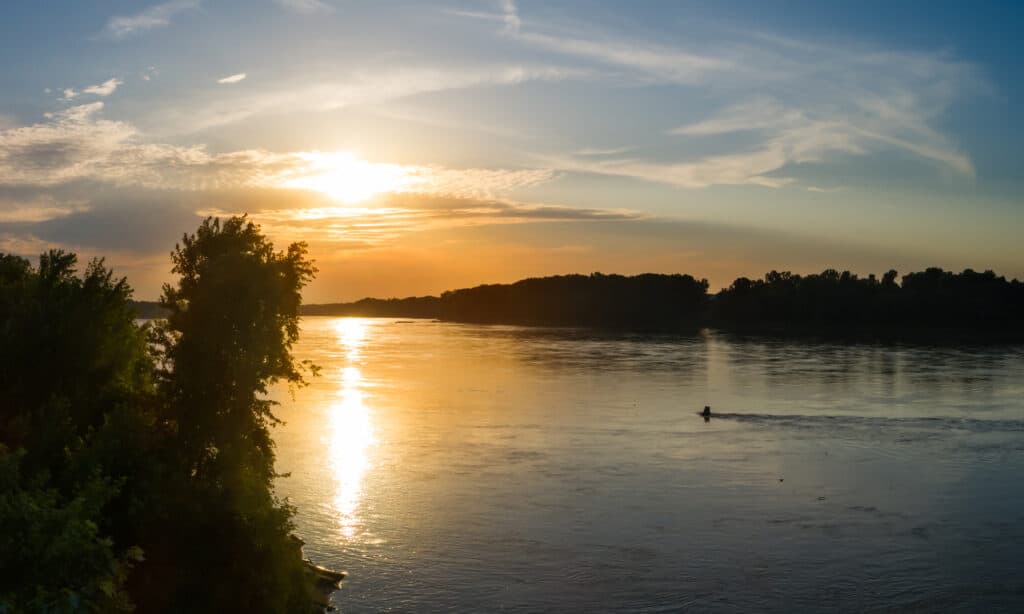
How wide is the Missouri River at its widest point? The Missouri River is 13 miles at its widest point.
©NSC Photography/Shutterstock.com
The Missouri River spans over 13 miles at its widest point, which is an approximation because measuring how wide the Missouri River at its widest point is not a precise science. In addition, its topography can differ significantly along with areas of flow. Soil erosion, sediment deposit, and flooding are responsible for this variation.
A river’s flow or volume dictates its width in various sites as it travels, with scientists measuring this flow in cubic feet per second. For example, the Missouri River has a flow of about 900,000 cubic feet at its widest point. Conversely, the flow is approximately 4,000 cubic feet per second at its narrowest points.
Is The Missouri River A Tributary?
The Missouri River is indeed a tributary. This river, together with the Arkansas, Illinois, Ohio, and Red rivers, are major tributaries of the Mississippi River. Of these four tributaries, the Missouri River is the longest.
In fact, Missouri is the longest river in North America. It begins its 2,342-mile-long journey in the Rocky Mountains and ends at its confluence with the Mississippi River in St. Louis. Missouri, the Mississippi, and the Jefferson River form the 4th largest river system.
How Many Tributaries Does Missouri Have?
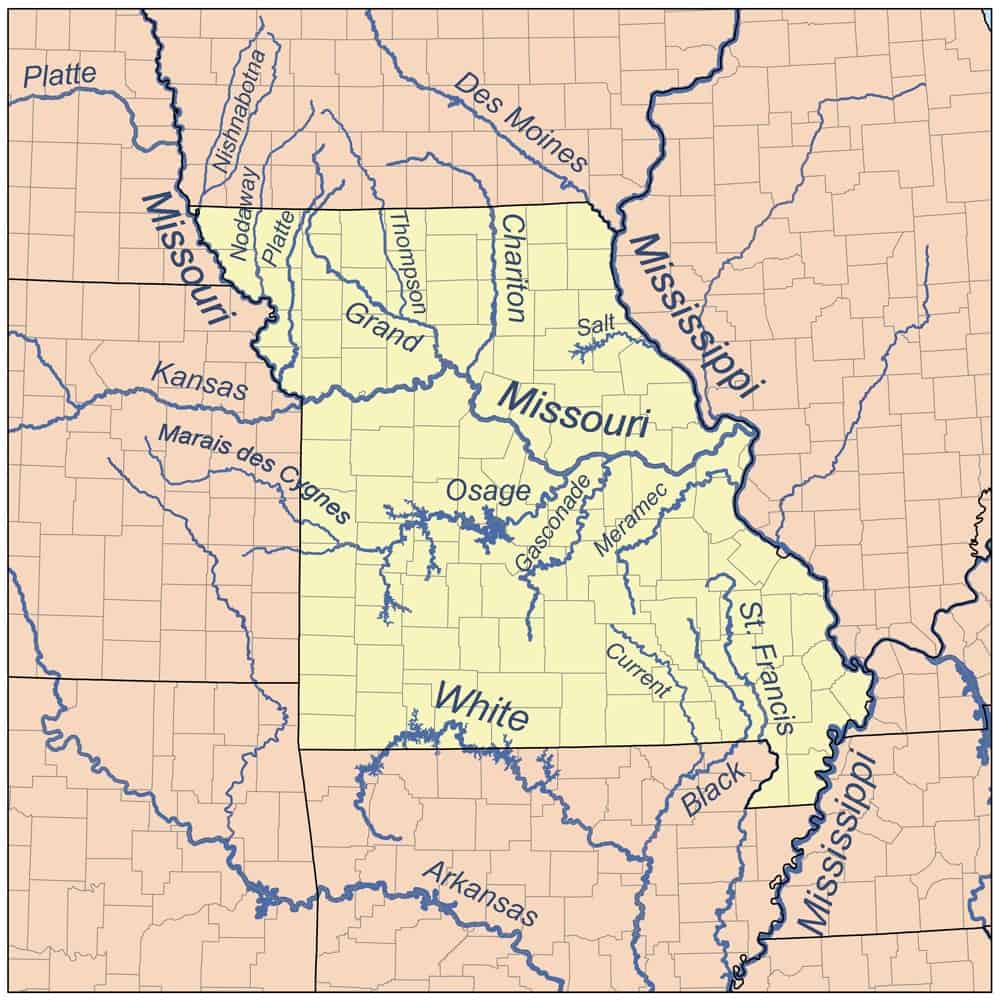
The Missouri River is fed by ninety-five major tributaries.
©Kmusser / CC BY-SA 2.5 – License
Over 95 major tributaries and hundreds of smaller ones feed the Missouri River. Significantly, most of these feed into Missouri closer to its mouth in St. Louis. Also, each of these tributaries has an average discharge of more than 5,000 cubic feet per second.
The Missouri River’s largest tributaries are:
- Yellowstone River in Montana and Wyoming
- Platte in Wyoming, Colorado, and Nebraska,
- Kansas–Republican/Smoky Hill in Kansas and Missouri
- Osage in Kansas and Missouri
The Missouri River’s longest tributaries are:
- Platte River
- Kansas River
- Milk River
- James River
- Yellowstone River
- White River
- Niobrara River
- Little Missouri River
- Osage River
- Big Sioux River
Why Do Bridges Over Missouri Have To Be a Certain Height?
Bridges over Missouri must be a certain height to allow river traffic to pass below. To this end, the BNSF Railway bridge accommodates barges by swinging out its middle section. This bridge is the one that runs parallel to the Buck O’Neil Bridge.
Interestingly, the Army Corps of Engineers posts a daily schedule on its Facebook page about this system, allowing the public to coordinate trips to the Berkley Riverfront Park with the movement of the bridges.
Some other major bridges across the Missouri River are:
- Champ Clark Bridge
- Mark Twain Memorial Bridge
- Quincy Memorial Bridge
- Bayview Bridge
- Route 47 Bridge
What is the Longest Bridge Across the Missouri River?
The Stan Musial Veterans Memorial Bridge is the longest bridge across the Missouri River. It is slightly longer than the Greenville Bridge but comparable in its structural size. Officials opened it on February 9, 2014, after a four-year construction process featuring twin cable-stayed arches.
The bridge spans the Missouri River between St. Louis, Missouri, and St. Clair County, Illinois. Both the northern-downstream (westbound) and the southern-upstream (eastbound) tiers support five lanes of traffic each.
The bridge dimensions are:
- Length of largest span – 1,500 ft
- Total length – 2,083 ft
- Deck width – 86 ft
What Types of Wildlife Live Along the Missouri River?
Wildlife is abundant along the Missouri River, which provides a rich source of feed, rest, and breeding grounds for various species. Many creatures make this environment their home.
Mammals
Many mammals live along the Missouri River, including mice, bats, rats, otters, and weasels.
Birds
The Missouri River ecosystem is a significant attraction for migratory birds. Many endangered migrating species, Piping Plover Interior Tern and American Bald Eagle, live here.
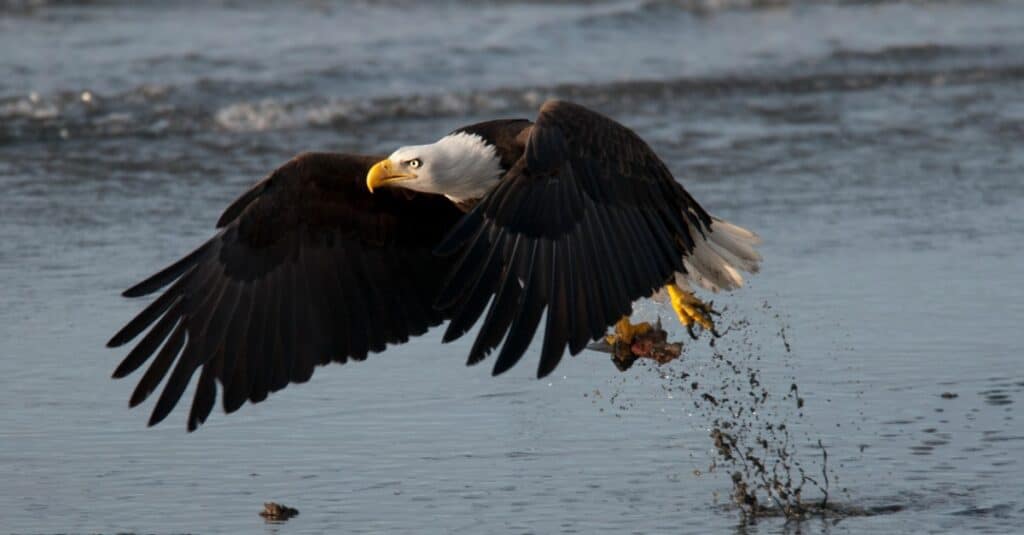
Magnificent Bald Eagle – Endangered species of Missouri.
©iStock.com/Genfirstlight
Amphibians and Reptiles
Ten species of amphibians live near the Missouri River. These include frogs, toads, and one species of salamander. Twelve different types of snakes and several species of turtles can also be found near the river bed.
Why Are the Missouri River’s Sturgeon and Alligator Gar Endangered?
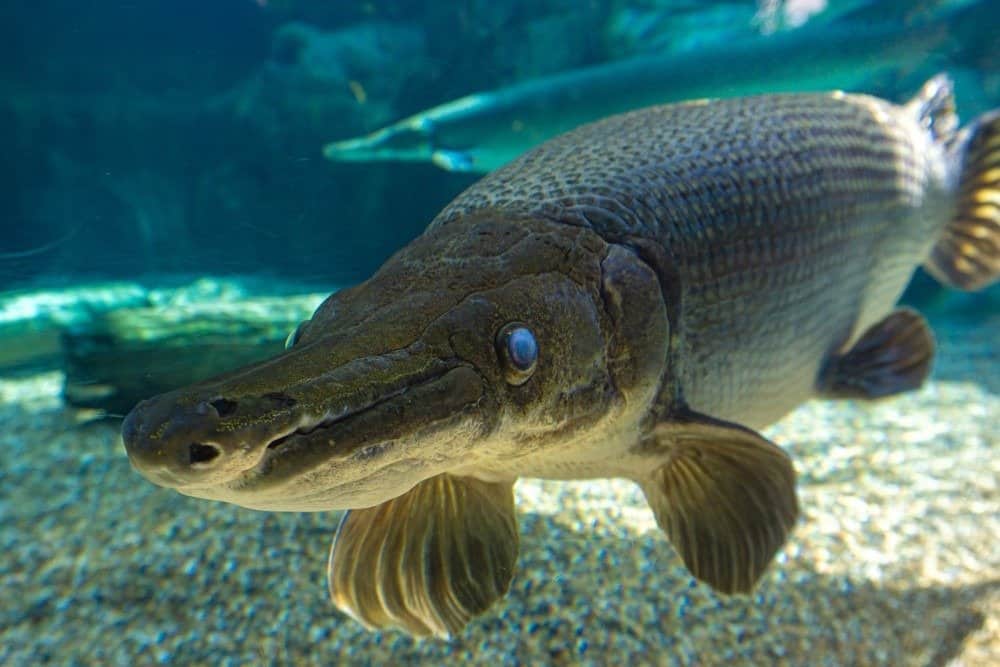
Alligator Gar – numbers declining in Missouri.
©TKBackyard/Shutterstock.com
At one time, the Missouri River was full of alligator gar as far upstream as the Mississippi. Sadly, their numbers have drastically declined in the last decade.
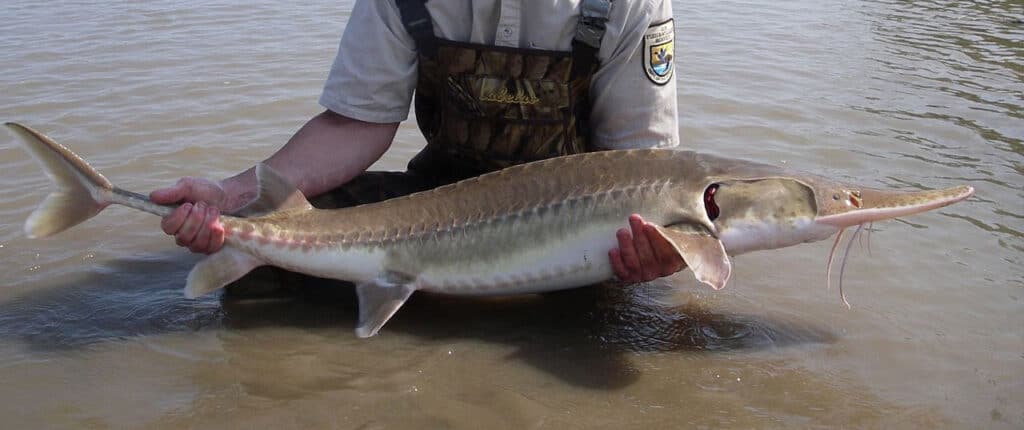
Missouri
Sturgeon
– At the brink of extinction.
©U.S. Fish and Wildlife Service / public domain – License
The IUCN classifies more than 85% of sturgeon species as critically endangered. This high percentage makes them one of the world’s most endangered fish species.
Overfishing these species has led to their numbers declining in the Missouri River. However, conservationists are working diligently to recover priority areas for endangered species. In addition, preventative measures and laws are underway to see these fish thrive.
Why is the Missouri River Nicknamed The “Big Muddy?”

Missouri “Big Muddy” is named for its silt-filled waters.
©NSC Photography/Shutterstock.com
The Missouri River is nicknamed the “Big Muddy” because of its high silt content. The river has always carried an immense amount of solid matter in its depths, most of which is fine sand. This river also deposits over 500 million tons of solid matter over 500 miles into the Mississippi River annually.
Because of this sediment, the water turns a cloudy brown, which is how it earned the name of the “Big Muddy.”
Why Does the High Sediment Content Affect the Width of the Missouri River?
Although the Missouri River has a greater annual flow of water than the Mississippi, it is subject to more significant fluctuations because of its murky content. As a result, the shoreline becomes far narrower in some parts than others.
The soil deposits have had a major effect on farms and villages along the banks of the Missouri River. In addition, the frequent shifting and narrowing of the shoreline have complicated navigability.
Over the last few decades, experts have implemented sediment regimes and restoration efforts. These efforts have had a positive impact on the Missouri River system.
Up Next
- How Long Is the Missouri River?
- Discover the Largest Fish in the Missouri River
- How Deep is the Missouri River?
The photo featured at the top of this post is © NSC Photography/Shutterstock.com
FAQs (Frequently Asked Questions)
How wide is the Missouri River?
The Missouri River spans over 13 miles at its widest point, which is an approximation because measuring how wide the Missouri River at its widest point is not a precise science.
How long is the Missouri River?
Missouri is the longest river in North America. It begins its 2,342-mile-long journey in the Rocky Mountains and ends at its confluence with the Mississippi River in St. Louis. Missouri, the Mississippi, and the Jefferson River form the 4th largest river system.
Thank you for reading! Have some feedback for us? Contact the AZ Animals editorial team.






